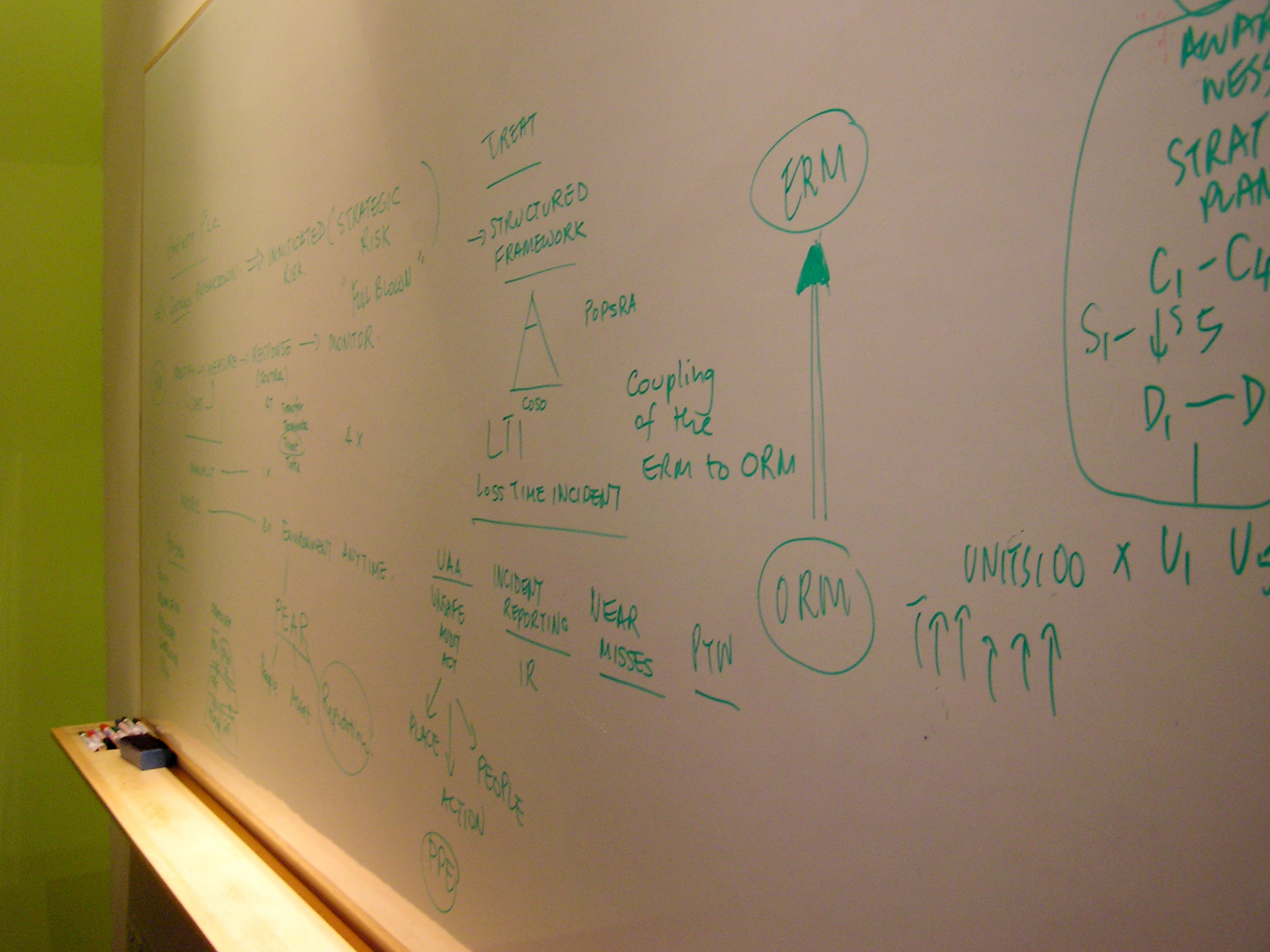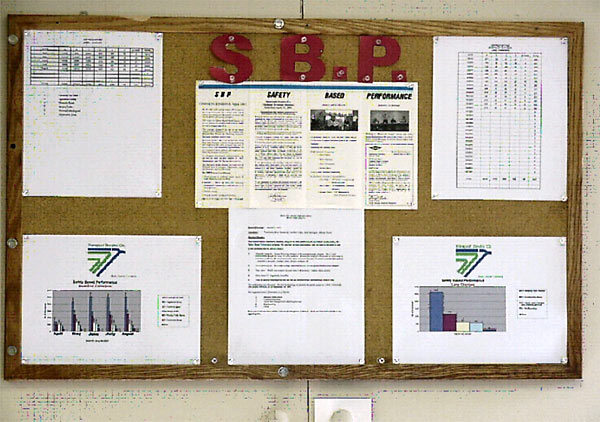When outfitting your office space, you'll probably be faced with the question of whether to purchase whiteboards or corkboards. We know your funds are limited, so we created a guide to outline the pros and cons of each as well as the smartest places to hang them. Take a look:

This office staple makes brainstorming a breeze; just watch out for that marker debris.
Whiteboards
Best spots to hang them:
Conference rooms: Any time employees are gathering to brainstorm, a large writing surface is crucial. Whiteboards allow a notetaker to jot down ideas that are being thrown at him or her quickly and for all to see, which helps spur new ideas, make connections and organize thoughts.
Communal areas: Since more offices are opting to do away with small conference rooms in favor of informal meeting spaces throughout the office, it might be good to invest in some rolling whiteboards that can be wheeled over to where ever people are talking.
Desks: Including a small whiteboard at each workstation might solve your "Post-it Note left on a computer monitor" problem that flares up every time an employee is away from their desk for an extended period of time. Instead of wasting paper, co-workers can jot notes to their colleagues on the whiteboard, just like they did in their college dorm room, although let's hope their office reminders aren't about the kegger at Delta Chi.
Hallways: Some businesses, including most famously Facebook, have turned entire hallways and walls into whiteboards so that employees can brainstorm and share ideas and inspiration anywhere. While this look might not fly in more button down fields like law offices or insurance agencies, in offices where creativity is king, they're a must-have.
Pros
Easy to clean: Unlike chalkboards that are perpetually dusty and corkboards that require unpinning and repinning, whiteboards can be cleaned in seconds with just an eraser or a cleaning solution and cloth.
Magnetized: If you're looking for a whiteboard to pull double-duty, that is for writing on and for posting information, you can find models that are magnetized.
Multi-purpose: With more and more meetings relying on Powerpoint or videoconferencing, whiteboards serve a whole other purpose that doesn't involve writing; namely, acting as a clean surface for projecting presentations and videos on.
Cons:
Less permanent: Like we said earlier, whiteboards are easy to clean which is a pro and a con, especially when someone decides to clean the board before you're done transposing the ideas and notes that came out of that three-hour creative planning meeting you had yesterday or when your shirtsleeve sweeps off portions of your presentation.
Stain easily: If words or drawings have been left on a whiteboard for too long, or if you accidentally use a permanent marker, the board can stain or have ghosted images on it even after you've used a dry eraser. To get rid of these shadows or impressions of messages past, you'll need some sort of cleaning solution (everything from rubbing alcohol to nail polish remover to toothpaste has been suggested) to remove the stain and after that you'll need to begin cleaning the board at least weekly.
Markers: There are some out there who like the chemical smell and potential contact high of dry erase markers (you know who you are) but plenty of others who are not big fans. The headache-inducing smell, propensity to dry up just when you need them and that goosebump-inducing squeaky noise they make when someone is writing really fast all make for a less-than-ideal experience. Plus, who likes having to clean that black residue off your hands and clothes after using them?

No office would be complete without a bulletin board offering everything from tips on sitting at your desk safely to notices about lost earrings.
Corkboards:
Best spots:
Break rooms: The break room is an ideal spot for a corkboard; employees can use it to store menus from area restaurants as well as hang up announcements that don't necessarily have to be work-related like flyers for their upcoming garage sale, sign-up sheets for the company 5K or order forms for their kids' latest school fundraiser. This is also a good spot to hang any signage that employers are legally obligated to display like information on job safety and health, the fair labor standards act and information about equal opportunity employment.
Hallways: Hallways are another smart place to hang corkboards. Heavily used corridors offer a place to showcase company success stories, highlight standout employees and offer insight into the company's history and vision for the future for both employees and clients to view. They can also be hung in the hallways near different departments and be used to share information and updates about that department. A corkboard outside human resources, for instance, would be ideal for reminding employees about the deadline for insurance forms, sharing healthy living tips and offering updates about the employee picnic.
Desks: Help employees stay organized and on top of projects by including a small corkboard at each workstation. They offer employees easy access to frequently used phone numbers or computer codes, are a good spot for hanging reminders about deadlines or invoices that need to be processed, as well as a nice place to hang something inspirational like a fortune cookie fortune or a drawing their kid made at school.
Pros:
Customizable: Corkboards come in a variety of sizes (and sheets of corkboard can be cut to any size or shape), so it's pretty easy to use them for different jobs throughout the office. Aesthetically, they're a snap to paint, embellish, cover and personalize to reflect your office's aesthetic and organization needs. Don't like the boring wood frame? Grab a can of spray paint. Think the cork itself looks a little dull? Cover it with wrapping paper, wallpaper or fabric (an especially good tip for companies who do more creative work). Plus, if you want to assign different duties for each section of the board, you can divide it up using tape, ribbon or paint.
Easy to use: Corkboards inspired a whole website (Pinterest) because they offer a simple, straight-forward way to organize and display things that are inspirational or useful to you. All you need is a tack. Rather than filing things away and forgetting about them, corkboards keep important information at your fingertips.
Soundproof: Cork is a natural sound dampener; it's often used in recording studios and theaters to help improve the acoustics, and it would definitely be useful in today's noisy open offices. Covering office walls in cork can help reduce the noise inside a room as well as lower the level of noise going room to room (and it's a natural insulator so it can help with your energy bills as well).
Cons:
Less spontaneous: While corkboards are great for displaying information used every day, they're not ideal for quick brainstorming sessions when you want to be able to post things quickly for all to see. Tacking up Post-its or other pieces of paper just doesn't have the same affect as writing it down.
Cluttered: For those prone to clutter, corkboards can be a disaster simply transferring messy paperwork from a desk to a wall. They need to be cleaned and organized periodically in order to ensure that they're not just a clearinghouse for all that uncategorizable stuff that hits your desk every day.
Tacks: If you've ever stepped on one you know that tacks aren't the kindest to the feet or hands they impale from time to time. Plus, they're small and easy to lose, which means you'll constantly be stocking them at your office.





